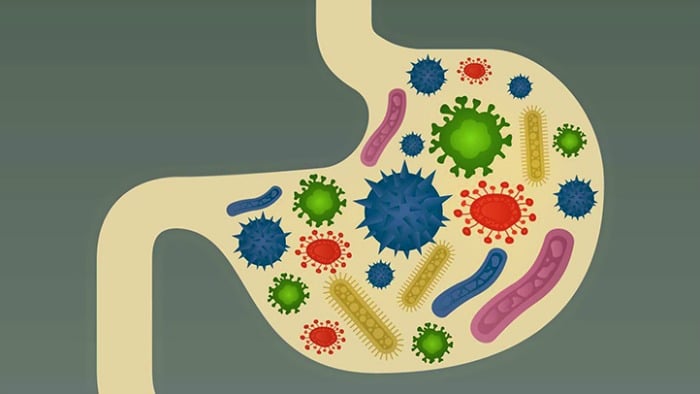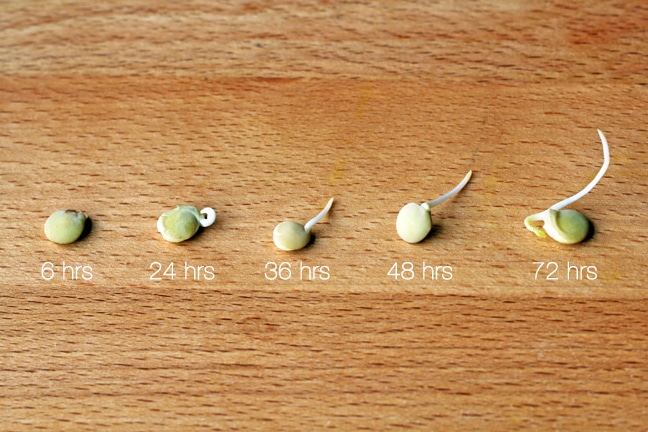In this article
Maybe you’ve heard the hype that you’re not supposed to eat legumes – or beans – because they’re “bad” for your health.
I’m going to help salvage the reputation of these glorious plant-based foods by shedding some light on the legume-shaming trend.
The reason many “experts” tell you not to eat legumes is because they contain high levels of a nutrient called phytic acid, which is a protective coating on the outside of a plant food.
While it’s a beneficial feature for the plants themselves, phytic acid is thought to be hard to digest for the human body. But all plant foods contain phytic acid – it’s what helps them survive and grow, but their amounts will vary.
While some argue that phytic acid is dangerous to your health – they consider it an “anti-nutrient,” robbing the body of stored vitamins and minerals – I’m going to play devil’s advocate and explain the truth about phytic acid and why legumes should be included in any healthy, fat-burning diet.
What Are Legumes?
Legumes include lentils, peas, and beans like fava beans, chickpeas (or garbanzo beans), navy beans, pinto beans and kidney beans.
They’re a staple in many ethnic recipes, including curries, spicy soups and warming stews, and they’re a great vegetable-based protein to add to salads.
Aside from their plant-based protein, legumes also contain several essential vitamins and minerals we need to get from our diets each day, like iron, potassium, vitamins A and C, and magnesium.
But one of their biggest health benefits is fact they contain a lot of fiber, which has a ripple effect throughout the body, enhancing health and preventing illness and disease.
Those reasons alone are enough to stop shaming legumes and start eating them again.
6 Good Reasons to Love Legumes
1. They can help shrink your waistline.
You’ve probably heard the famous saying, “Abs are made in the kitchen.” That’s right – legumes are an essential component of any fat-burning diet.
So if you’ve been spending countless hours doing crunches for abs, you may want to call it quits and start eating legumes every day instead. (OK, so maybe legumes alone can’t give you a six-pack, but adding them to your diet will help your body naturally burn fat.)
How do legumes burn fat, anyways?
First, legumes are considered a carbohydrate and contain a nutrient found in carbohydrates called amylopectin C. Amylopectin C is the least digestible starch, which means it’s slower to digest. That prevents the starch from spiking blood sugar levels (1).
This is an important quality that turns a “regular” food into a fat-burning food.
Why? Because starchy carbohydrates like white bread, white pasta, and other forms of refined sugar cause your blood sugar levels to rise very quickly once they’re ingested – they contain very little fiber to slow the release of their sugar into your bloodstream.
And since it’s dangerous to have high blood sugar levels, when your body is flooded with those sugars it releases the hormone insulin, which takes the sugar from your blood and stores it in your cells.
Any sugar that can’t be used for energy immediately is stored as fat, which is why insulin is known as the hormone that triggers fat storage.
If you want to your body to burn fat instead of store it, you must eat foods that won’t cause a dramatic spike in blood sugar. Legumes do a great job of preventing blood sugar spikes because of their fiber and amylopectin C content.
Related: 11 Quick and Easy Ways for Lowering Blood Sugar Naturally
2. They help prevent type 2 diabetes.
Since the real cause of type 2 diabetes is a blood sugar problem (not an insulin problem as many people believe), legumes are one of the best foods to help regulate blood sugar levels.
Now that you understand how fiber and amylopectin C work to slow the release of sugar into the bloodstream, it makes sense that studies on people with high blood sugar consistently find that legumes help lower and regulate their blood sugar levels.
This deems legumes an entirely safe and beneficial food for anyone experiencing blood sugar sensitivities (2).
3. They’re good for your gut and prevent colon cancer.
Healthy gut bacteria form the foundation of a healthy body. This is why it’s so important to regularly eat the foods that feed gut bacteria.
Good bacteria feed off foods that are considered prebiotics (which are really just fiber-rich foods), and allow them to grow and multiply in your digestive system.
Legumes are considered prebiotics because amylopectin C nourishes your healthy bacteria. And healthy gut bacteria improves the health of your entire body.
The prebiotics in legumes may also be the reason why it’s believed that eating them regularly can prevent colon cancer.
According to the World Cancer Research Fund, people who ate legumes at least four times a week had lower incidences of cancerous lesions in their colon and rectum, when compared to than those who only ate one or fewer servings of legumes per week (3).
4. They provide you with slow, steady energy.
If you struggle to have energy that lasts all day long, you might want to consider using legumes to help you reduce your need for naps.
In order to have steady energy that lasts the entire day, you must have steady, stable blood sugar levels. This is because your energy levels are directly impacted by their undulations throughout the day.
Your blood sugar rises and falls as a result of eating refined sugar, caffeine, gluten, and also due to chronic stress (just to name a few).
Luckily, fiber-rich legumes don’t have a negative impact on blood sugar. In fact, they naturally slow down the release of carbohydrates into the bloodstream, which allows the sugar (or glucose) to break down slowly, and provide the body with a steady stream of energy.
This is a much better option than having a sugar high that’s rapidly followed by an energy crash.
Related: The #1 Food That Gives You All-Day Energy
5. They’re a great source of protein for vegans and vegetarians.
If you follow a plant-based diet, how many times have your friends asked you where you get your protein?
While it’s true that animal products contain the highest amounts of protein, all plant foods contain amino acids, too. Amino acids are the building blocks of protein.
Legumes contain 6 to 9 grams of protein per serving. This makes them an ideal staple to include in any vegan and vegetarian diet.
Protein is important because it’s the catalyst of nearly every bodily function, from muscle and tissue repair to cognitive function, as well as allowing you to properly digest and absorb the foods you eat. Without protein, we wouldn’t be able to survive.
However, since all foods contain amino acids, protein deficiency isn’t as much of a risk as some mainstream information has lead us to believe – even if you’re vegan or vegetarian.
By eating a healthy diet rich in whole, plant-based foods, you’ll still be getting protein in your diet each day – and you can certainly get the most protein bang for your buck by eating lentils.
Related: This Is the Easiest Curried Lentils Recipe You’ll Ever Make
6. They lower cholesterol, blood pressure and triglycerides.
According to a study published in the Journal of the American Medical Association, those with high LDL cholesterol levels (the bad kind of cholesterol) and triglycerides experienced lowered levels after including legumes in their diet (4).
In the study, those with the above health issues were split into two groups. The first group was given enriched whole wheat for the duration of 12 weeks, while the second group was given one cup of legumes in their diet each day.
While the findings showed that both the whole wheat and legumes lowered LDL cholesterol, triglycerides and blood pressure, the legumes were shown to have a greater impact overall.
The Phytic Acid Debate
Now that you’ve learned about the numerous health benefits of legumes, you may be wondering if the “antinutrient” argument rings true.
Does the phytic acid in legumes really rob the body of nutrients? And can phytic acid reduce the bioavailability of the nutrients in legumes?
To put your mind at ease, studies have shown that phytic acid can indeed bind to minerals.
However, this binding happens inside the food itself before it’s consumed, not within the human body. Therefore, no vitamins or minerals are taken from the body’s stores when phytic acid is digested.
On the other hand, phytic acid can prevent you from properly absorbing the iron in plant foods.
This means that if you rely on legumes or plant foods for protein alone, you might not get enough iron in your diet each day. A solution to this would be to include iron from alternative sources where it’s more bioavailable, such as free-range organic meat.
As you can see, the overall nutritional value and health benefits of legumes far outweighs the phytic acid debate.
Making Legumes Easier to Digest
It’s true that legumes can cause gas and bloating for some people. This is because they contain sugar molecules called oligosaccharides which are digested by your good bacteria. When digested by good bacteria, they can sometimes produce gas (5).
Time Lapse of a Sprouting Lentil
To make legumes easier to digest, try these tips:
- Instead of using canned legumes, soak dry legumes before cooking them at home. Soaking overnight allows legumes to begin to ferment (or break down), which can help make them easier to digest and enhance the bioavailability of their nutrients.
- If legumes are a new to your diet or cause you digestive upset, you may want to try eating the least gas-forming versions. Try mung beans, adzuki beans, black eyed peas and split peas. Once your body gets used to them, you can add other varieties in your diet.
- Sprout legumes before cooking. This can help with their digestibility and also increase their nutrient content. Beans can be easily sprouted at home simply by using air, water and time. You can find many different resources online about how to sprout beans in a few easy steps.
Legumes: The Untold Truth
Now that you have a clear understanding of how healthy and beneficial legumes can be for your body, you may be interested to try some meal and snack recipes.
Black Bean Brownies
Here are a few of my favorites:
- Spicy Garlic Oven Roasted Chickpeas
- Vegan Caesar Salad with Smoky, Sweet Chickpeas
- 5-Ingredient Black Bean Quinoa Burgers
- The Easiest Black Bean Brownies Recipe Ever
Fuel Your Body Healthfully
Looking for quick meals that make your body happy? Check out my All-Day Energy Diet Community Cookbook, which features 67 real-world-tested recipes that take 15 minutes to get to the table.
They’re also gluten- and dairy-free, as well as being low in sugar and allergens. Plus, they’re delicious!
You can get the cookbook – for FREE! – by clicking the banner below.









